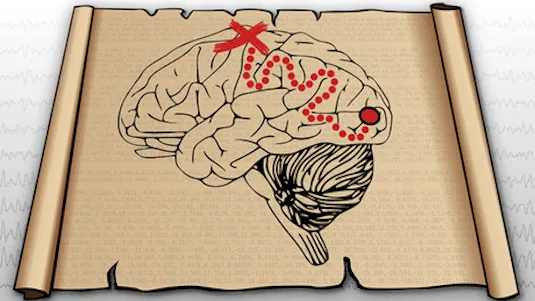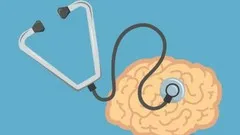
Exploring Neural Data 
This course provides an introduction to neuroscience research and explores questions related to how brains work. It is designed to help students understand the challenges faced by neuroscientists and gain an appreciation of the complexity of the brain. Through lectures, discussions, and hands-on activities, students will gain an understanding of the neural data and its implications. ▼
ADVERTISEMENT
Course Feature
![]() Cost:
Cost:
Free
![]() Provider:
Provider:
Coursera
![]() Certificate:
Certificate:
Paid Certification
![]() Language:
Language:
English
![]() Start Date:
Start Date:
29th Sep, 2014
Course Overview
❗The content presented here is sourced directly from Coursera platform. For comprehensive course details, including enrollment information, simply click on the 'Go to class' link on our website.
Updated in [March 06th, 2023]
Exploring Neural Data is an introductory course designed to provide students with an understanding of neuroscience research and the challenges faced by neuroscientists when working with large amounts of data. Leading neuroscientists will give tours of their labs, describe their research, and explain their data analytic techniques. Students will gain knowledge in three main areas: basic principles of neuroscience and questions driving research in this field; programming with the open-source language Python; and essential techniques for data analysis. The course will begin by exploring single neurons, then turn to multiple neurons, and finally consider tools that sample from tens of thousands of neurons. At the end of the course, students will have the opportunity to investigate in detail a data set of their choice provided by one of the researchers whose work they've learned about.
[Applications]
Upon completion of Exploring Neural Data, students will have a better understanding of the challenges faced by neuroscientists and the techniques used to analyze data. They will be able to apply their knowledge of neuroscience principles and data analysis techniques to their own research projects. Additionally, they will have the skills to use Python to program and analyze data. Finally, they will have the opportunity to explore a data set of their choice in detail.
[Career Paths]
1. Neuroscientist: Neuroscientists are responsible for researching and understanding the brain and nervous system. They use a variety of techniques to study the brain, including imaging, electrophysiology, and behavioral experiments. Neuroscientists are also responsible for developing new treatments and therapies for neurological disorders. The field of neuroscience is rapidly growing and developing, and neuroscientists are in high demand.
2. Data Scientist: Data scientists are responsible for analyzing large amounts of data and extracting meaningful insights from it. They use a variety of techniques, such as machine learning, to uncover patterns and trends in data. Data scientists are in high demand in many industries, including healthcare, finance, and technology.
3. Machine Learning Engineer: Machine learning engineers are responsible for developing and deploying machine learning models. They use a variety of techniques, such as deep learning, to create models that can accurately predict outcomes. Machine learning engineers are in high demand in many industries, including healthcare, finance, and technology.
4. Artificial Intelligence Engineer: Artificial intelligence engineers are responsible for developing and deploying artificial intelligence systems. They use a variety of techniques, such as natural language processing, to create systems that can accurately understand and respond to user input. Artificial intelligence engineers are in high demand in many industries, including healthcare, finance, and technology.
[Education Paths]
1. Neuroscience: Neuroscience is a field of study that focuses on the structure and function of the nervous system. It is a rapidly growing field, with new discoveries being made every day. A degree in neuroscience can lead to a career in research, clinical practice, or teaching. Common degree paths include a Bachelor of Science in Neuroscience, a Master of Science in Neuroscience, and a Doctor of Philosophy in Neuroscience.
2. Computer Science: Computer Science is a field of study that focuses on the design and development of computer systems and software. It is a rapidly growing field, with new technologies being developed every day. A degree in computer science can lead to a career in software engineering, data science, or artificial intelligence. Common degree paths include a Bachelor of Science in Computer Science, a Master of Science in Computer Science, and a Doctor of Philosophy in Computer Science.
3. Data Science: Data Science is a field of study that focuses on the analysis and interpretation of large datasets. It is a rapidly growing field, with new techniques and technologies being developed every day. A degree in data science can lead to a career in data analysis, machine learning, or predictive analytics. Common degree paths include a Bachelor of Science in Data Science, a Master of Science in Data Science, and a Doctor of Philosophy in Data Science.
4. Artificial Intelligence: Artificial Intelligence is a field of study that focuses on the development of computer systems that can think and act like humans. It is a rapidly growing field, with new applications being developed every day. A degree in artificial intelligence can lead to a career in robotics, natural language processing, or computer vision. Common degree paths include a Bachelor of Science in Artificial Intelligence, a Master of Science in Artificial Intelligence, and a Doctor of Philosophy in Artificial Intelligence.
Course Provider

Provider Coursera's Stats at AZClass
Exploring Neural Data presents neuroscience research and explores questions about how the brain works. It is designed to help students understand the challenges faced by neuroscientists and understand the complexity of the brain. Learners gain an understanding of the fundamental principles of neuroscience and the issues driving research in the field. They will be able to explore the real-world challenges neuroscientists face when processing the vast amounts of data collected from the brain. Through lectures and lab visits, learners will gain insight into the research conducted by leading neuroscientists and the data analysis techniques they use.
Discussion and Reviews
0.0 (Based on 0 reviews)
Explore Similar Online Courses

С&C++ for competitive programming

Badminton Bio-mechanics

Python for Informatics: Exploring Information

Social Network Analysis

Introduction to Systematic Review and Meta-Analysis

The Analytics Edge

DCO042 - Python For Informatics

Causal Diagrams: Draw Your Assumptions Before Your Conclusions

Whole genome sequencing of bacterial genomes - tools and applications

Control Your Subconscious Mind: Neuroscience Hidden Secrets

Perform an Excellent Neurological Bedside Exam


Start your review of Exploring Neural Data